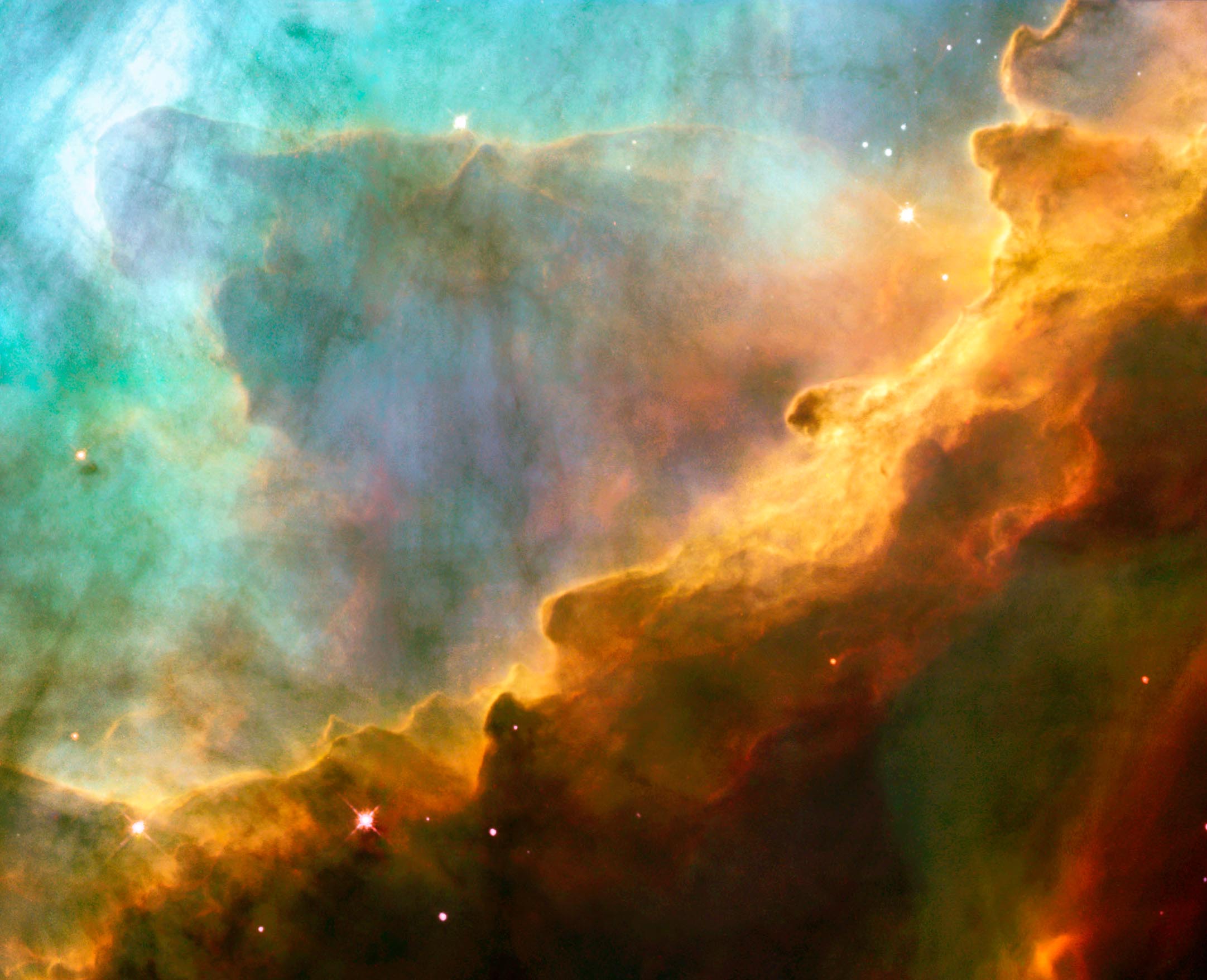
Omega Nebula
Resembling the fury of a raging sea, this image actually shows a bubbly ocean of glowing hydrogen gas and small amounts of other elements such as oxygen and sulfur. The photograph, taken by the Hubble Space Telescope, captures a small region within M17, also known as the Omega or Swan Nebula. The nebula is a hotbed of star formation, where wave-like patterns of gas have been sculpted and illuminated by a torrent of ultraviolet radiation from the young, massive stars that lie outside the picture to the upper left. The glow of these patterns accentuates the three-dimensional structure of the gases. The ultraviolet radiation is carving and heating the surfaces of cold hydrogen gas clouds. The warmed surfaces glow orange and red in this photograph. The intense heat and pressure cause some material to stream away from those surfaces, creating the glowing veil of even hotter greenish gas that masks background structures. The pressure on the tips of the waves may trigger new star formation within them. This image was released to commemorate the thirteenth anniversary of Hubble's launch on April 24, 1990. For more information, visit: hubblesite.org/contents/news-releases/2003/news-2003-13.html
